Physics 312 Lecture: "Superposition of Waves and Standing Waves I."
Apr 10, 1998
- When two sinusoidal waves with identical frequencies and
wavelengths interfere, the result is another wave with
the same frequency and wavelength, but a maximum amplitude
which depends on the phase difference between the input waves.
- Constructive interference occurs when the phase difference
between two waves is zero, or some multiple of pi radians
- Destructive interference occurs when the phase difference
between two waves is some multiple of pi/2 radians
- Adding two sound waves which are out of phase may yield silence!
- Standing waves occur when a wave reflects back and forth in
a confined space and interferes with itself
- Nodes are locations where a standing wave has zero amplitude
- Antinodes are locations where a standing wave has maximum amplitude
- Waves travelling on a string fixed at both ends are constrained
to have specific wavelengths and frequencies
This lecture discusses material in Chapter 18 of Serway.
-
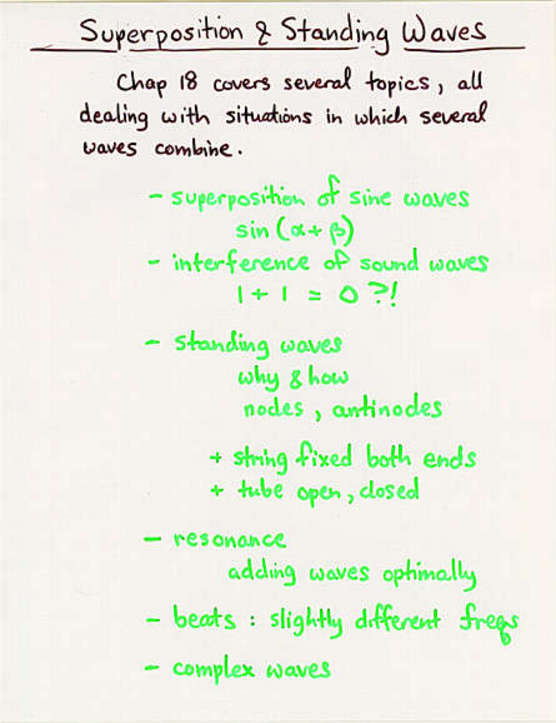 Viewgraph 1
Viewgraph 1
-
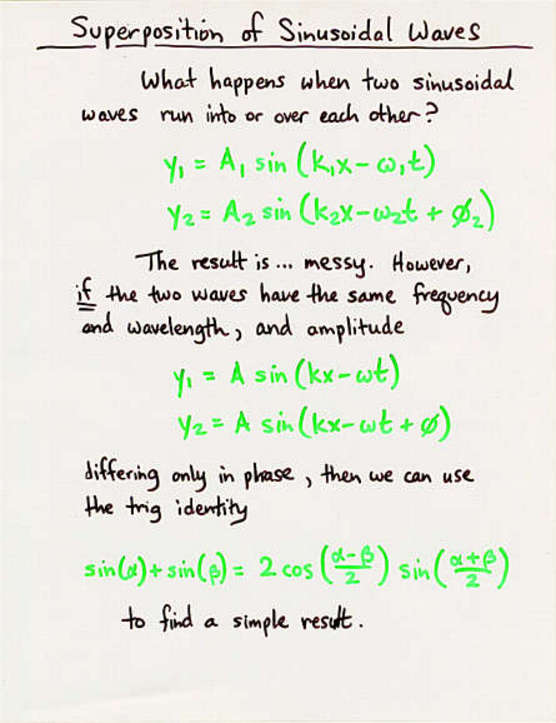 Viewgraph 2
Viewgraph 2
-
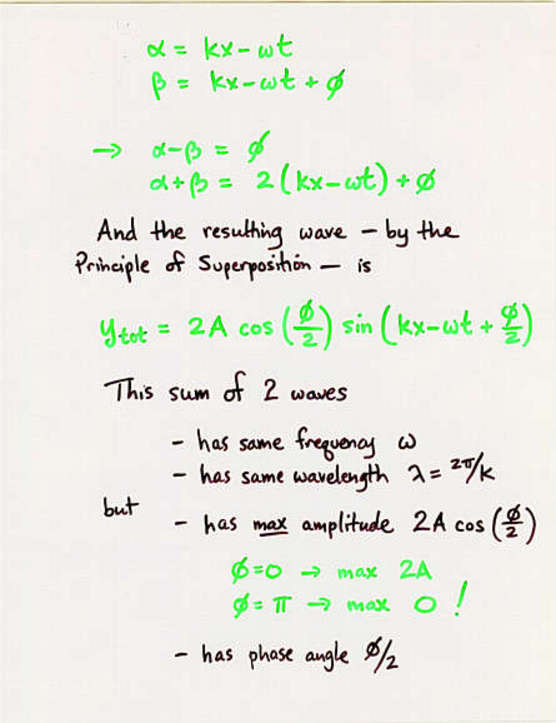 Viewgraph 3
Viewgraph 3
-
 Viewgraph 4
Viewgraph 4
-
 Viewgraph 5
Viewgraph 5
-
 Viewgraph 6
Viewgraph 6
-
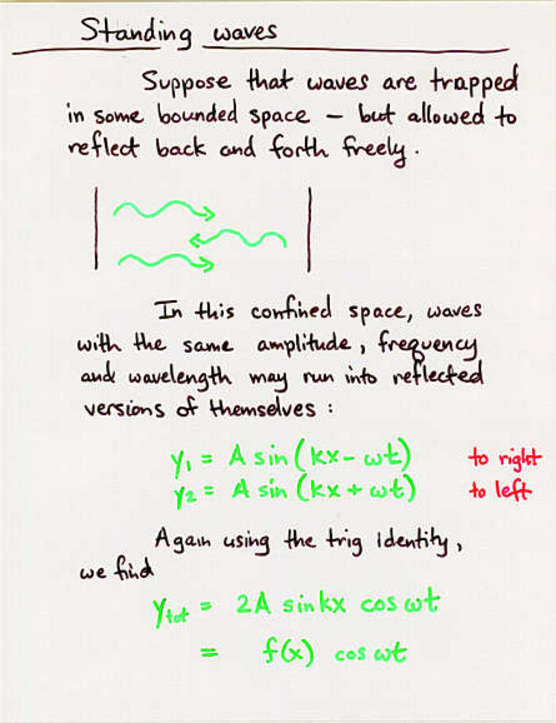 Viewgraph 7
Viewgraph 7
-
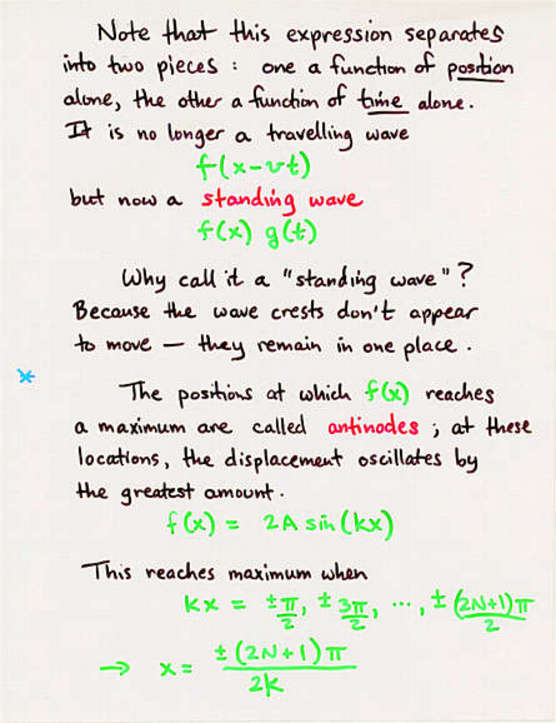 Viewgraph 8
Viewgraph 8
-
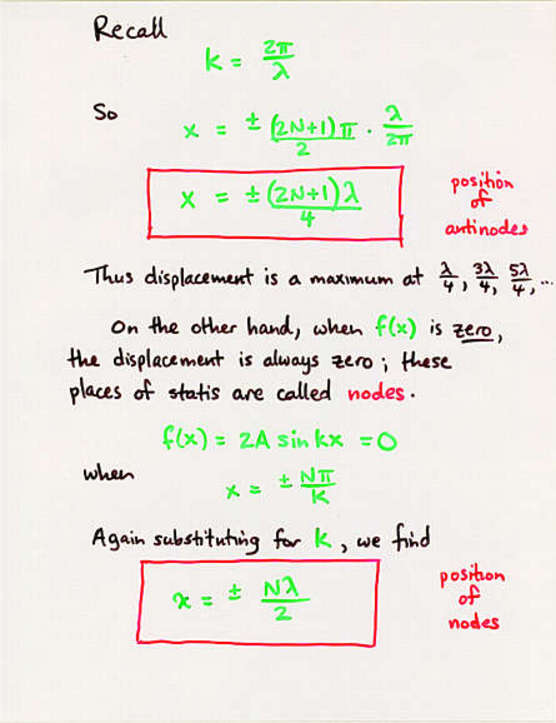 Viewgraph 9
Viewgraph 9
-
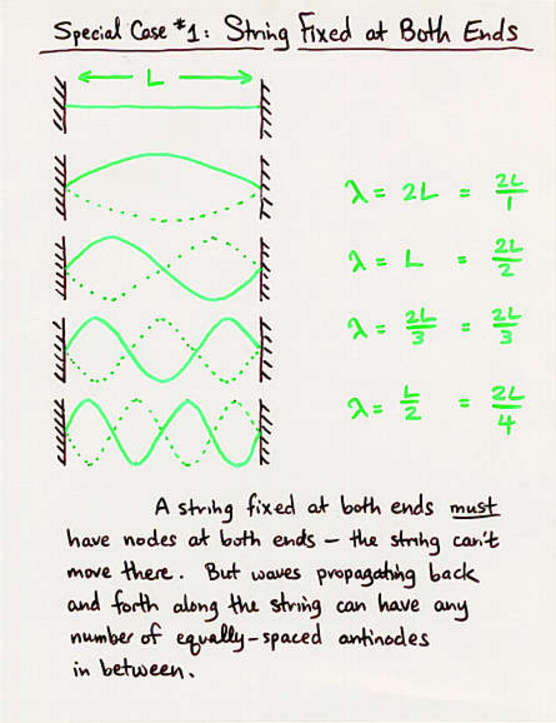 Viewgraph 10
Viewgraph 10
-
 Viewgraph 11
Viewgraph 11
-
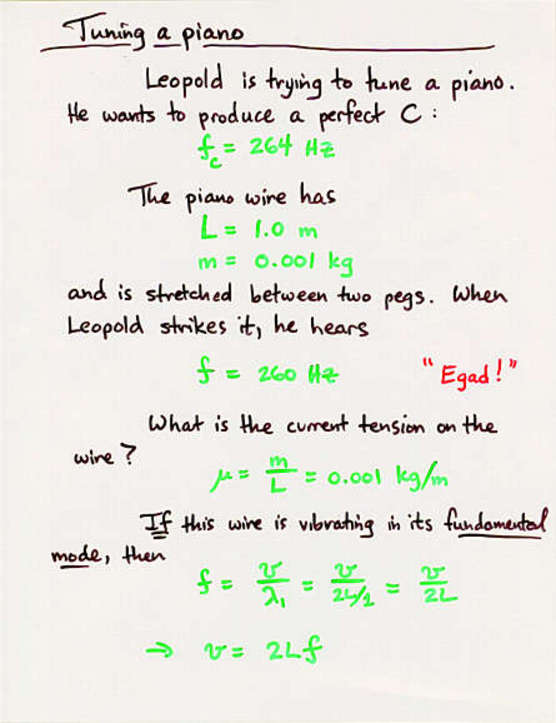 Viewgraph 12
Viewgraph 12
-
 Viewgraph 13
Viewgraph 13
 Viewgraph 1
Viewgraph 1 Viewgraph 2
Viewgraph 2 Viewgraph 3
Viewgraph 3 Viewgraph 4
Viewgraph 4 Viewgraph 5
Viewgraph 5 Viewgraph 6
Viewgraph 6 Viewgraph 7
Viewgraph 7 Viewgraph 8
Viewgraph 8 Viewgraph 9
Viewgraph 9 Viewgraph 10
Viewgraph 10 Viewgraph 11
Viewgraph 11 Viewgraph 12
Viewgraph 12 Viewgraph 13
Viewgraph 13 Viewgraph 1
Viewgraph 1 Viewgraph 2
Viewgraph 2 Viewgraph 3
Viewgraph 3 Viewgraph 4
Viewgraph 4 Viewgraph 5
Viewgraph 5 Viewgraph 6
Viewgraph 6 Viewgraph 7
Viewgraph 7 Viewgraph 8
Viewgraph 8 Viewgraph 9
Viewgraph 9 Viewgraph 10
Viewgraph 10 Viewgraph 11
Viewgraph 11 Viewgraph 12
Viewgraph 12 Viewgraph 13
Viewgraph 13